- Home
- Creepers & Climbers
- Variegated Curtain Creeper -...
Variegated Curtain Creeper - Creepers & Climbers







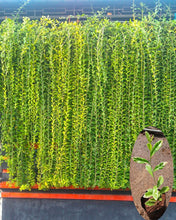





Variegated Curtain Creeper - Creepers & Climbers

 Climate
Climate Time to yield
Time to yield Growth Pattern
Growth Pattern


Damaged or lifeless? We’ll replace it for free. Learn more



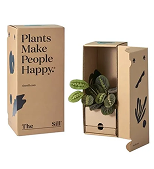
Double layered custom boxes to protect plants during shipping.
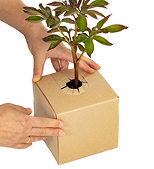
Air vents for proper air-flow
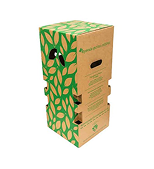
To preserve plant freshness during transit
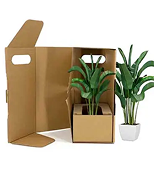
Details steps of how to grow and maintain your plant
Curtain creeper is Botanically known as Vernonia elaegnifolia from the Compositae family. Common names are Curtain creeper, Vernonia creeper, Parda bel. It is a perennial evergreen vine & it requires trellising or chain-like fencing for growing over it. It can be grown in big pots/containers and it is also a drought-tolerant plant.
Curtain creeper is one of the amazing evergreen vine, mainly grown for its lush green foliage, it doesn't attract any insect & disease, so it is one of the zero maintenance plants. It is a creeper that finds it difficult to climb without support. So, the slender stems climb up and then fall down beautifully over a wall or railing. The tender stems, all hanging down form a curtain, hence the name Curtain creeper. Curtain-like partitions and also topiaries can be grown using a curtain creeper. Basically, it is a foliage plant, grown primarily for its habit of forming a green curtain.
MAXIMUM HEIGHT - It can reach up to 8-10 meters in height.
BLOOMING YEAR - Flowers are very small whitish, or light yellow & it blooms at any time of the year.
GROWING TIPS
- It can grow almost in all types of soil and it can easily grow in Indian Climatic conditions.
- Plants grow very quickly and should be given strong support to climb on.
- For fast growth, it needs support, the more support it will grow very quickly.
- It can grow either in full sunlight or partial sunlight is also okay to grow.
- For lush green & bushy appearance better to plant it directly in the soil.
- After 15 days you can transplant it into your permanent location in full bright light condition.
INSIDE THE BOX
| S.No. | PRODUCT NAME | DIMENSION |
| 1. | Curtain creeper Plant | 1-2 Feet Height |
| 2. | Growing Pot (Black color) | 6 Inch |
**above specifications are for indicative purposes only, actual dimensions may slightly vary.
PLANT CARE
LIGHT CONDITION - More than 3 hours of Direct Sunlight.
WATERING SCHEDULE - Water when the topsoil(2-3 inches) feels dry to touch. Always maintain moisture near the root zone.
SOIL TYPE - The soil should be well-drained, fertile & rich in organic content.
FERTILIZER APPLICATION - Initially up to 1 year apply any organic fertilizer once a month. After that apply 2-3 times a year.
PLANT PROTECTION - Do regular pruning of the plant in order to maintain good required shape. Generally, it is not affected by any pest & disease.
INITIAL CARE FOR 10-15 DAYS JUST AFTER RECEIVING YOUR PLANT
- Remove the Packaging Materials carefully.
- Press the soil in the pot & add additional soil(garden mix) if necessary.
- Maintain moisture in the pot, Do not overwater it may kill your plant, so make sure that the soil should be dry between watering.
- Provide support with stick/moss stick(vine plant) in order to make straight growth, for needed plant only.
- Make sure that plants get enough morning direct bright light for 10-15 days & do not go for immediate transplanting(minimum 1 month)
- Just prune if any branch of the plant is get damaged in transit. New leaves will come very fast.
Selected plant of 8-10 inches
Planted into a 5-inch pot
With healthy, moisture-retaining soil
A care instruction sheet for maintenance guide

Get in touch for best pricing on bulk orders and landscaping projects.
 WhatsApp us
WhatsApp us

Call on 9177805454 (Mon-Sat, 9 AM-6 PM) or WhatsApp us – we’re here to help.
About Exotic Flora
At Exotic Flora, we’re passionate about bridging the gap in bringing plants to everyone. With over 500+ varieties across 7 plant categories, from exotic finds to everyday greens, we bring the entire range to you.
Our plants, sourced from all parts of India are nurtured at Kadiyam, in our 25 acres in-house nursery by a team of expert horticulturists. Once they are ready we ship all our plant varieties across India.
Our services go beyond safe delivery of plants. A dedicated support team is there to help you with any maintenance queries you may have.
At Exotic Flora we always believe in going that extra mile, because everyone should have the plants they love.
It grows horizontally. Creepers are plants with stems that grow along the ground, around another plant / on a wall by means of extending stems or branches.
It grows vertically. Climbers are plants with a tender stem that grow with the help of external support. They climb over the other by twine or hook from their leaves & stems.
It depends on the plant varieties and the available space for spreading. In General, a creeper can spread up to 15 meters.
Perennial creepers/climbers are plants that live or grow for a long time (more than a year)
List of plants that can also grow in Indirect bright light is All money plants, Pink wall creeper, All thunbergia, Ipomoea cairica & Ipomoea black, Hari Champa, Cissus nodosa, Mandevilla, and Trachelospermum jasminoides.
Minimum 3 years needed for a creeper plants to cover 5-10 meter of walls. But it also depends on the Plant care and plant variety.
It is always good to read both together, Creepers grow horizontally, it creeps on the ground whereas Climbers grow vertically by external support by their twine, tendrils, and other supportive structure.
Minimum 4-6hours of direct bright light are necessary for flower plants to produce flowers. The soil should be well-drained, fertile, and organic in nature, the sandy-loam soil is the best soil for flowering plants.
The best Fertilizers are Organic fertilizers & Organic compost, manure to apply to your flowers. Remember Phosphorus based fertilizers are best to produce more flowers. Look at the descriptions of each plant for plant care guidelines.
There are some creepers like Curtain creeper, Elephant creeper, Dolichandra unguis cati, Thunbergia, Passion flower, Wall creeper, Ipomoea etc, are very suitable for making privacy or providing like structure for shade purpose.
the plant arrived in good condition